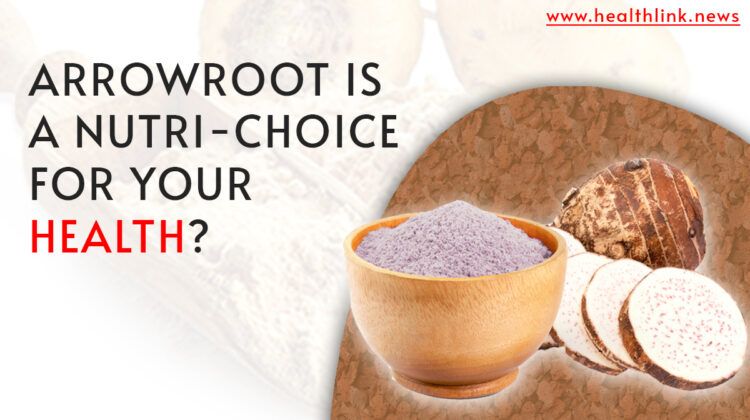Benefits and Side Effects of Arrowroot

Arrowroot
Have you ever thought about how arrowroot is grown? First, you should know what arrowroot is, a starchy vegetable that is grown from the rhizomes of a tropical plant. Usually, it is produced in powder form called arrowroot flour, with a dense store of energy, and is widely used in sweet dishes as well as in savory dishes. Arrowroot is a treasure of nutrients such as protein, folate, iron, potassium, and phosphorus, which deliver endless benefits to your health. Arrowroot is a nutritional food that is effective at supporting healthy digestion, and provides vitamin B, which is good for your body, boosts your metabolism, is good for circulation, is good for your heart, and aids in weight loss.
How does it work?
Nutrition Facts
- Calories: 78
- Carbs: 16 grams
- Fiber: 2 grams
- Protein: 5 grams
- Fat: 0 grams
- Folate: 102% of the Daily Value (DV)
- Phosphorus: 17% of the DV
- Iron: 15% of the DV
- Potassium: 11% of the DV
One scoop of arrowroot contains 78 calories and 0.24g of fat. Arrowroot is dense in Vitamin B9 (folic acid), carbohydrates, and minerals such as potassium, calcium, sodium, and phosphorus. It also contains fluid, fiber, protein, and a negligible amount of unsaturated and unsaturated fatty acids.
Arrowroot health benefits
Arrowroot has been used for medicinal purposes with potential benefits linked to its starch content and composition.
1. Boosts Metabolism and Weight loss
Arrowroot is a high-protein plant that is important in the diet. It supports healthy metabolism and helps in regulating hormonal changes. It is best for people who work long hours. Arrowroot powder consists of 32% resistant starch, which your body cannot digest. It forms a gelatinous mass when mixed with water and acts as the soluble fiber in your gut.
Arrowroot is a source of B-complex vitamins, which are essential for regulating metabolism. Folate also helps with the control of hormonal activity in the body. Nonetheless, there’s no scientific proof for the claim that hormone restoring creams can restore disrupted hormonal levels.
High-fiber, resistant starch-rich foods slow your rate of digestion, giving you an extra feeling of fullness. In turn, this may lead to weight loss, can help regulate your appetite, and can help you stay on track with your diet.
In a study of 20 adults, individuals who consumed a supplement with 1.5 ounces (48 grams) of resistant starch, arrowroot’s protein content may aid feelings of fullness as it provides a lower number of calories than a control group.
2. Fight Diarrhea
Arrowroot may help treat diarrhea if it is used as a laxative. Severe diarrhea may lead to fluid loss, dehydration, and even death —especially in vulnerable populations such as children, there is a need to develop age-adapted assessments.
In a study experiment, 11 people who took 2 teaspoons (10 mg) of arrowroot powder in a three-day regimen experienced less diarrhea and abdominal pain.
The high starch content of arrowroot helps increase stool consistency and size. Consequently, this reduces the frequency of your evacuations. It may also help your body rehydrate to make up for the loss of fluid that’s related to the removal of fluids from your system.
3. Supports your Immune System
Arrowroot’s resistant starch content may or may not cultivate your immune system. Prebiotics are a source of fiber, which feeds your gut bacteria.
As a result of beneficial gut bacteria, your immune system may be boosted, as they produce multiple vitamins and absorb key minerals that your immune system needs to function properly. More importantly, they may even alter the way your body functions in many diseases.
4. Fits a Gluten-Free Diet
Arrowroot is a grain. Like most grains, it has no gluten in it. It can therefore be used as a substitute for wheat flour.
Those who have celiac disease—a common digestive disorder in which gluten inflames your intestine—need to completely avoid it.
There is no doubt that arrowroot starch resists starchiness, is versatile, and can improve the texture, crispness, and flavor of many gluten-free products. Arrowroot starch is particularly suitable for gluten-free products because it improves their texture, crispness, and flavor. Arrowroot is versatile and has great mixability with almond flour, coconut flour, or tapioca flour for baking recipes.
5. Arrowroot is a B-vitamin powerhouse
Arrowroot is a good source of B-vitamins, especially riboflavin and niacin. Niacin has long been known for its ability to reduce the risk of cardiovascular diseases and boost cholesterol. Pellagra is a disease characterized by diarrhea, dementia, dermatitis, and death.
Arrowroot contains folate, another vitamin B-complex that works to prevent anemia and stimulate cell division and growth. Folate also prevents neural tube defects and helps to prevent fatal development.
6. Arrowroot supports healthy digestion
That’s why this food is referred to as “rich in starch” which acts as a mild laxative in regulating bowel movement and digestion. For these reasons, it is suitable for patients with irritable bowel syndrome; traditional medicine also uses arrowroot starch for treating diarrhea and gastrointestinal problems.
It is the gluten-free characteristics that make it more suitable for celiac patients. Also, it helps reduce stomach pain and bloat.
7. It’s good for your Infant
The addition of arrowroot increases the absorption of essential nutrients, promoting growth and development, and it is one of the best substitutes for breast milk. Arrowroot biscuits can be effective to control diarrhea, bronchitis, cough in infants, and alleviating pain in the gums when milk tooth erupts.
8. Has high potassium to sodium ratio
Arrowroot can make hypertension in good health. The 100-gram arrowroot contains about 454 grams of potassium, compared to only 26 grams of sodium. That means it is incredibly good for dilating the blood vessels and bringing back the pressure to normal levels. This translates into improved heart health.
9. Good for your heart
Several recent studies have suggested that potassium consumption is beneficial for your heart. Because potassium in arrowroot softens the blood vessels and arteries, it may help reduce the risk of heart disease. This study suggests that herbal remedies may not be effective for treating chest pain. If you experience inflammation or irritation in your chest, see your doctor.
Potatoes are high in electrolytes, which help maintain blood flow to the brain. They also help prevent cardiac diseases, so it’s a smart idea to eat them regularly.
10. Promotes good circulation
Arrowroot has high amounts of starch, B-complex vitamins, and iron, which are important for red blood cell corpuscles. The body uses its oxygen reserve to get energy for muscles and vital organs. When muscles and vital organs receive oxygenated blood, they prevent fatigue, weakness, and anemia. Increased circulation to the brain enhances brain function, cognition, and memory.
11. Improves kidney health
The high amount of potassium present in arrowroot helps in clearing toxins and stressors from the circulation and kidney, which helps improve urinary system functioning, boost immunity, and keep blood pressure in check.
It’s important to remember that delaying or avoiding medical care can have serious consequences.
12. Heals your skin
Arrowroot has anti-aging properties, which means it can help repair sun-damaged skin and bring back the natural glow. Enriched with vitamins, antioxidants, and protein, arrowroot can treat blemishes, acne scars, rashes, and dark spots. When you incorporate arrowroot powder in the face mask, you are also helping to rejuvenate sun-damaged skin and to bring back the natural glow.
Side effects
Arrowroot is safe when starch is used in foods. There’s not enough reliable information to know if it’s safe to use in large amounts. It might cause stomach discomfort or constipation.
Arrowroot is safe when taken orally in food amounts for pregnant and lactating women. There isn’t enough reliable information to know if arrowroot is safe to use in the larger amounts found in food. It is better to stick to smaller amounts of nutrition to stay safe.
Although the appropriate dose of arrowroot depends on a variety of factors, overall health should be the most important factor. At this time, there is no conclusive scientific information on the efficacy of arrowroot for the treatment of low back pain. However, an appropriate range of doses between 2 and 3 grams may be a good starting point. Bear in mind that natural products are not always safe, and dosages can be important. Make sure to follow prescribed directions on product labels and consult your pharmacist or healthcare professional before using.
Arrowroot Powder Uses
Arrowroot extract is more frequently consumed as a powder. It is used as an emulsifier in sauces, puddings, and jellies, as well as an ingredient in baked goods like cookies and cakes. Additionally, it is a common replacement for wheat flour in gluten-free recipes.
It is claimed that it has several cosmetic applications due to its alleged oil-absorbing capacity, although they probably aren’t supported by scientific evidence. Popular uses include, for example, using it to help you remember more information.
Dry shampoo: Massage arrowroot powder into your scalp to refresh your hair.
Deodorant ingredient: Make a diluted mixture of arrowroot powder, coconut oil, and baking soda for a homemade deodorant.
Talcum and baby powder substitute: On its own, this powder is said to absorb moisture and increase smoothness. I use it with a light hand to apply to my face.
Homemade makeup: Mix cinnamon, cloves, and nutmeg to make face powder or foundation, or mix raw cocoa or cocoa powder with beetroot powder for blush.
